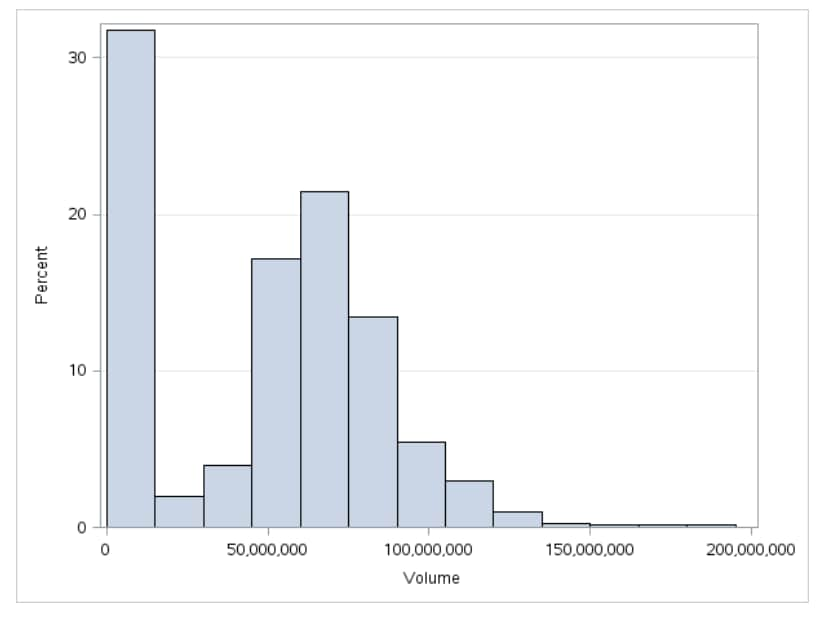Histogram Task
Assigning Data to Roles
You can subset the data in the
input data set by applying an SQL WHERE clause. In the Where
string box, enter your valid SQL syntax. You must enclose
character strings in single quotation marks. To view this WHERE clause
with the resulting graph, select the Include as footnote check
box.
To run the Histogram
task, you must assign a column to the Analysis variable role.
You can specify whether
to create a density curve that shows the distribution of values for
a numeric variable. You can create density curves for normal and kernel
distributions.
Setting Options
|
Option Name
|
Description
|
|---|---|
|
Title and Footnote
|
|
|
You can specify a custom
title and footnote for the output. You can also specify the font size
for this text.
|
|
|
Bin Details
|
|
|
For the bins in the
histogram, you can specify the color and the transparency. If you
are running the second maintenance release for SAS 9.4 or later, you
can also specify whether to apply a gradient to each bin.
|
|
|
Horizontal Axis
|
|
|
Interval
axis
|
creates tick marks at
regular intervals on the horizontal axis based on the minimum and
maximum values of the analysis variable.
|
|
Bin axis
|
creates tick marks at
the midpoints of the value bins on the horizontal axis.
|
|
Specify
number of bins
|
enables you to specify
the number of bins in the histogram. Valid values range from 2 to
20.
The bins always span
the range of data. The task tries to produce tick values that are
easily interpreted (for example, 5, 10, 15, 20). Sometimes the location
of the first bin and the bin width might be adjusted. By default,
the task automatically determines the number of bins.
|
|
Show label
|
displays the label for
the analysis variable along the horizontal axis. You can also enter
a custom label.
|
|
Vertical Axis
|
|
|
Specify
axis scaling
|
specifies the scaling
that is applied to the vertical axis. You can choose from these options:
COUNT
the axis displays the
frequency count
PERCENT
the axis displays values
as a percentage of the total.
PROPORTION
the axis displays values
as proportions (0.0 to 1.0) of the total.
|
|
Show grid
|
specifies whether to
show the grid lines for the vertical axis.
|
|
Show label
|
specifies whether to
show the label for the type of axis scaling.
|
|
Legend Details
|
|
|
Show legend
|
specifies whether to
display a legend in the output.
|
|
Legend location
|
specifies whether the
legend is placed outside or inside of the axis area.
|
|
Graph Size
|
|
|
You can specify the
width and height of the graph in inches, centimeters, or pixels.
|
|
Copyright © SAS Institute Inc. All rights reserved.

